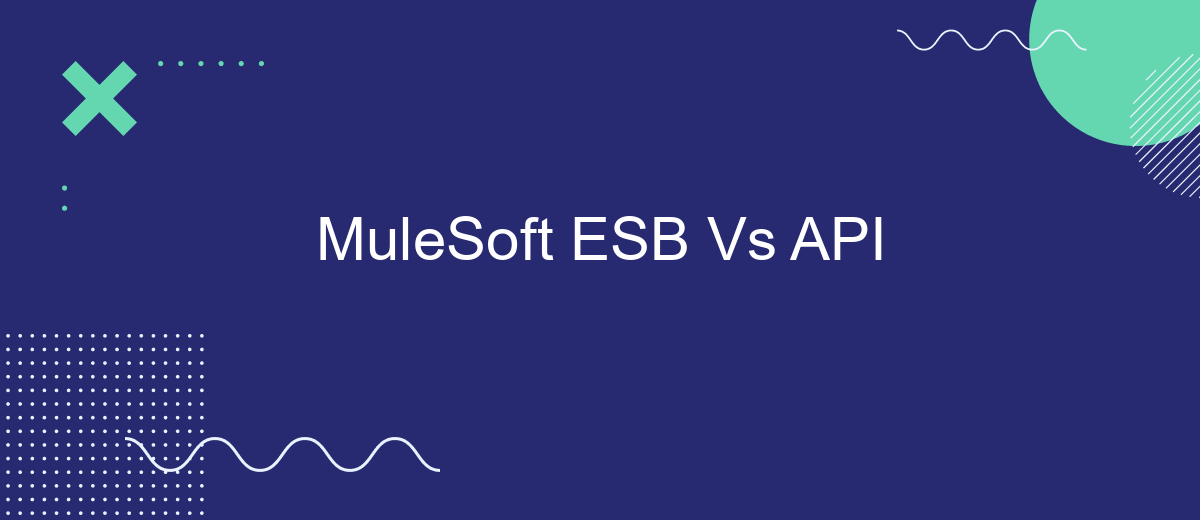In the ever-evolving landscape of enterprise integration, choosing the right tools is crucial for seamless operations. MuleSoft, a leading name in integration solutions, offers both an Enterprise Service Bus (ESB) and robust API management capabilities. This article delves into the key differences, use cases, and advantages of MuleSoft ESB versus APIs, helping businesses make informed decisions for their integration needs.
Introduction
In today's digital landscape, businesses are increasingly relying on integration platforms to streamline their operations and improve connectivity between various applications. MuleSoft ESB (Enterprise Service Bus) and API (Application Programming Interface) are two prominent solutions that facilitate seamless integration and data exchange. Understanding the differences and use cases of these technologies is crucial for making informed decisions.
- MuleSoft ESB: A comprehensive integration platform that allows businesses to connect applications, data, and devices with ease.
- API: A set of protocols and tools for building software and applications, enabling them to communicate with each other.
Choosing the right integration tool depends on the specific needs and goals of your organization. While MuleSoft ESB offers a robust solution for complex integrations, APIs provide a flexible and scalable approach for connecting various services. Tools like SaveMyLeads can further enhance integration processes by automating lead data transfer between platforms, ensuring efficient and error-free operations.
Core Features

MuleSoft ESB (Enterprise Service Bus) and APIs (Application Programming Interfaces) offer distinct core features that cater to different integration needs. MuleSoft ESB provides a robust platform for connecting various applications, data sources, and services. It emphasizes seamless communication between disparate systems through a centralized bus architecture, enabling real-time data exchange and process orchestration. This allows businesses to streamline their workflows and ensure consistent data flow across their IT landscape.
On the other hand, APIs focus on enabling direct and efficient interactions between applications. They allow developers to expose specific functionalities of an application to other systems, facilitating modular and reusable integration solutions. Tools like SaveMyLeads enhance API integrations by providing automated workflows that connect various services without extensive coding. This not only accelerates the integration process but also reduces the complexity involved in maintaining these connections. Both MuleSoft ESB and APIs play crucial roles in modern integration strategies, each offering unique advantages depending on the specific requirements of the business.
Architecture and Scalability

When comparing MuleSoft ESB and API, it's essential to consider their architecture and scalability. MuleSoft ESB follows a traditional enterprise service bus architecture, which allows for centralized integration and orchestration of services. This approach is beneficial for complex, large-scale enterprises that need to manage multiple integrations and ensure high availability and reliability.
- MuleSoft ESB provides robust message routing and transformation capabilities.
- It supports various communication protocols and data formats.
- The centralized architecture can sometimes become a bottleneck under heavy load.
- Scalability can be achieved through horizontal scaling by adding more instances.
On the other hand, APIs offer a more decentralized and lightweight approach to integration. They enable direct communication between services, which can improve performance and reduce latency. Services like SaveMyLeads help streamline API integrations by providing pre-built connectors and automated workflows, making it easier to scale and manage integrations without extensive coding. This decentralized model is particularly advantageous for modern, microservices-based architectures where scalability and agility are paramount.
Integration and Connectivity

When it comes to integration and connectivity, MuleSoft ESB and APIs offer robust solutions for connecting disparate systems and enabling seamless data flow across an organization. MuleSoft ESB, with its comprehensive suite of tools, facilitates integration by acting as a middleware, allowing different applications to communicate efficiently.
On the other hand, APIs provide a more modern approach to integration by exposing specific functionalities of an application or service for use by other applications. This method promotes flexibility and scalability, enabling businesses to adapt quickly to changing requirements and integrate new services with ease.
- MuleSoft ESB: Middleware for complex integrations
- APIs: Modern, flexible, and scalable integration method
- SaveMyLeads: Automates lead data integration from various sources
For businesses looking to streamline their integration processes, tools like SaveMyLeads can be invaluable. SaveMyLeads automates the transfer of lead data from various platforms, ensuring that sales and marketing teams have immediate access to up-to-date information, thereby enhancing efficiency and productivity.
Comparison Table
When comparing MuleSoft ESB and API, it's essential to understand their core functionalities and use cases. MuleSoft ESB (Enterprise Service Bus) is designed to facilitate communication and data exchange between different systems, acting as a middleware. It supports various protocols and formats, making it ideal for complex integrations within enterprises. On the other hand, APIs (Application Programming Interfaces) provide a way for different software applications to communicate directly. APIs are typically used for building and connecting modern web services and applications, offering a more lightweight and flexible approach compared to ESB.
One of the key differences lies in their implementation and scalability. MuleSoft ESB is well-suited for large-scale, enterprise-level integrations where robust data transformation and orchestration are required. In contrast, APIs are more agile and easier to deploy, making them perfect for microservices architectures and cloud-based applications. Tools like SaveMyLeads can simplify the integration process by automating data transfer between various platforms, enhancing both ESB and API implementations. Therefore, the choice between MuleSoft ESB and API largely depends on the specific needs and architecture of the organization.
- Automate the work with leads from the Facebook advertising account
- Empower with integrations and instant transfer of leads
- Don't spend money on developers or integrators
- Save time by automating routine tasks
FAQ
What is the main difference between MuleSoft ESB and API management?
Can MuleSoft ESB and API management be used together?
What are the advantages of using MuleSoft ESB for system integration?
How does API management benefit businesses?
Are there tools available to simplify the automation and integration process?
Are you using Facebook Lead Ads? Then you will surely appreciate our service. The SaveMyLeads online connector is a simple and affordable tool that anyone can use to set up integrations for Facebook. Please note that you do not need to code or learn special technologies. Just register on our website and create the necessary integration through the web interface. Connect your advertising account with various services and applications. Integrations are configured in just 5-10 minutes, and in the long run they will save you an impressive amount of time.

